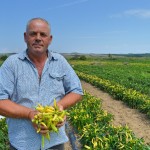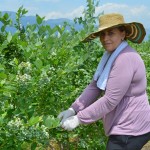Speeches Shim

Chili pepper, or feferoni, farming is relatively new to Kosovo farmers, although USAID had previously introduced production of chili peppers to small farmers in various regions of Kosovo. This year for the first time, with the help of USAID’s Agricultural Growth and Rural Opportunities program, Kelmendi has piloted chili pepper on a 0.3 hectare area of his plot located in the village of Bellacrk. He is one of 10 farmers to begin growing the new crop under the program.

Seeing a clear business opportunity, Hoxha started importing drilling machinery to produce the raw materials needed for post-war reconstruction. After spending time abroad, Hoxha was eager to do something good for his country. But when the time came to pay his electric bill, he received a real shock.

Making the move from an administrative job in the Netherlands to growing blueberries in western Kosovo has had its ups and downs for Besnik Lila. In Kosovo, blueberries are currently grown on a modest 50 hectares in total, over six different production zones involving 20 growers.

The five-year USAID EMPOWER Private Sector project aims to create jobs in Kosovo by helping businesses identify and pursue opportunities for growth. To date, the project, which began in 2014, has assisted 364 Kosovo businesses like Milos and Marta to expand their production and sales. By fostering and encouraging growth opportunities, USAID has stimulated $83.8 million in sales among its beneficiary companies and helped create nearly 3,000 new jobs since 2015.
Late last year, the University of Pristhina, Kosovo’s largest public university, launched an innovation and entrepreneurship center that has exceeded even the highest expectations of its founders. While initial training events were planned for 100 students, demand mushroomed to over 1,000 applicants. Public presentations, such as Women in Entrepreneurship, played to a sold-out auditorium in the university that serves 50,000 students.


Comment
Make a general inquiry or suggest an improvement.